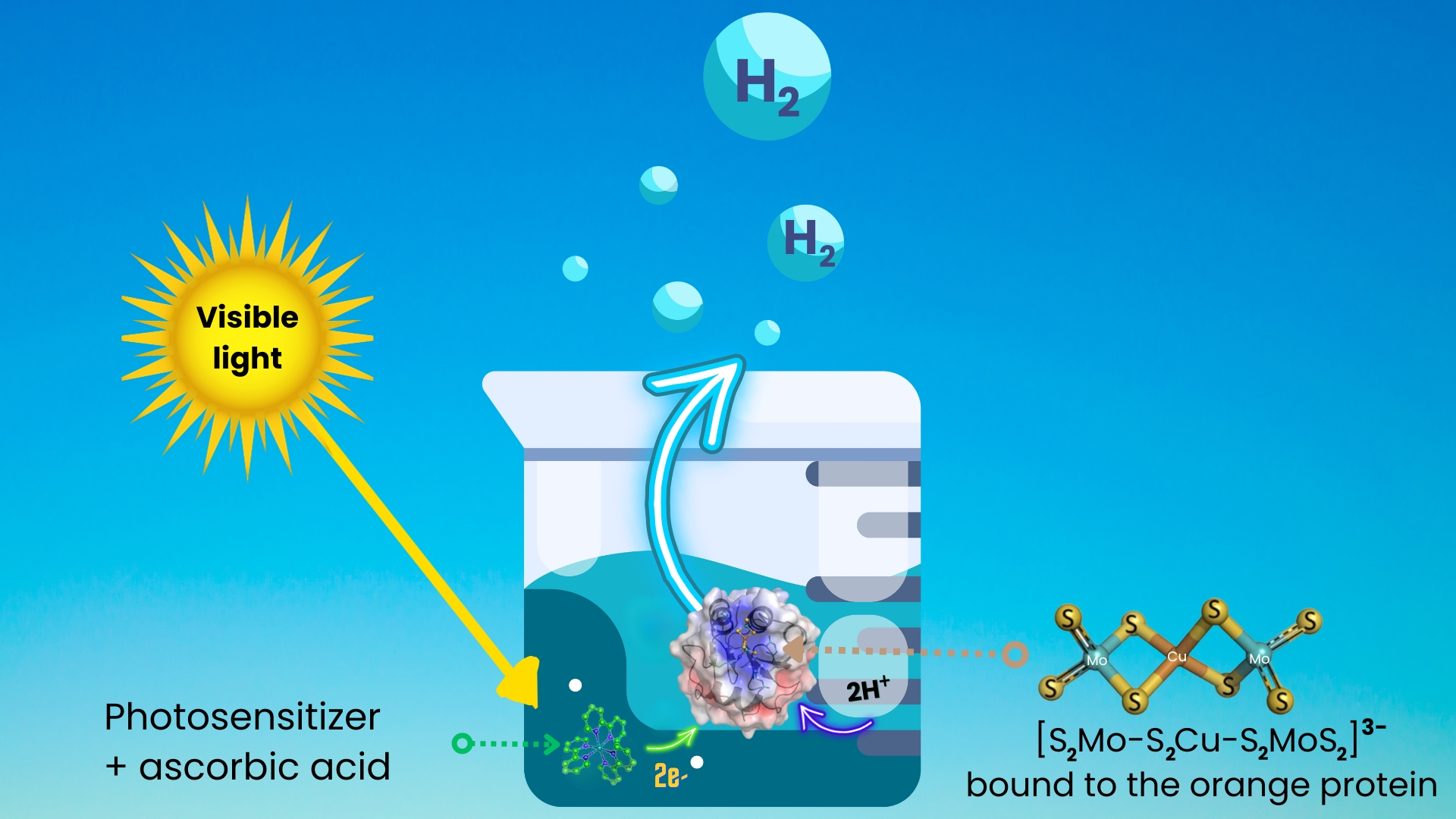The energy transition is a major challenge for the 21st century. Research is focusing on new energy sources and new technologies to recycle carbon from CO2 into hydrocarbons or organic molecules with high added value for industry. The electro- and photo-reduction of water into H2 or of CO2 into energy-dense organic chemical molecules is one of the key strategies for storing renewable energies, in chemical energy available at will (the energy contained in chemical bonds). The development of this technology requires the development of new catalysts, as well as a better fundamental understanding of the multi-electronic and multi-protein mechanisms associated with these reactions, in order to improve them for low-cost, stable, efficient and selective storage processes. Against this backdrop, researchers at IRIG, in collaboration with researchers from the College de France Laboratoire de Chimie des Processes Biologiques, have investigated the Orange protein (Orp) in terms of its ability to catalyze the reduction of protons to H2. This is a small monomeric protein of 120 amino acids containing an original metal cluster [S2MoS2CuS2MoS2]3- whose physiological function is still unknown. The choice of this protein was dictated by the structural similarity of its metal center to the metal active site of Mo-S-Cu carbon monoxide dehydrogenase (CODH), an enzyme known to reduce CO2 to CO.
Studies showed that after 4 hours of irradiation under visible light in the presence of the photosensitizer [Ru(bpy)3]Cl2 and a sacrificial electron donor, the
Holo-Orp protein exhibited excellent photo-catalytic hydrogen production activity for 890 cycles (see
Figure).
In order to optimize the enzymatic system, different clusters of the formula [S2MS2M′S2MS2](4n)- were inserted into the
Orp protein, and the system containing a Mo and Fe-based cluster proved to be the most efficient catalyst, with 1150 catalytic cycles in just 2.5 hours, a record among artificial hydrogenases reported in the literature to date.
These results represent a breakthrough for future biotechnological applications.

Figure: H2 production after irradiation of the Holo-Orp protein in the presence of the photosensitizer [Ru(bpy)3]2+ and the sacrificial electron donor.